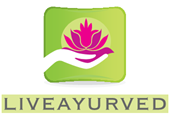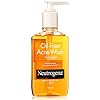|
|
|

|
Written and Reviewed By :
Vd. Lakshmi Lakshmanan,
Ayurveda Physician,
Chakrapani Ayurveda Center, Jaipur, Rajasthan, India.
|

What is Acne?
Acne is a common skin condition that arises when oil-secreting glands in the skin become clogged, leading to inflammation or infection. While not dangerous or harmful, acne can leave scars. The skin contains tiny pores that connect to oil glands beneath the surface through small canals called follicles. These glands produce sebum, an oily substance that helps carry dead skin cells to the surface. Normally, a small hair grows through the follicle, but when it becomes blocked, pimples develop.
Ayurveda's Perspective:
In Ayurveda, Acne Vulgaris is referred to as ‘Mukhadushika,’ categorized under ‘Kshudra Roga’ (minor ailments). "Mukha" means face, and "Dushika" refers to something that vitiates. Individuals with oily skin, or those with a Kapha Prakriti or Kapha Vikriti, are more susceptible to acne. Factors such as excessive consumption of fatty and fast foods, lack of physical activity, and increasing pollution contribute to its occurrence. Acne can impact self-esteem and lead to anxiety, making timely treatment essential.
|
Causes of Acne:
|
Kala Swabhava (Age & Seasonal changes) |
Adolescence period Spring, Autumn and Summer season.
|
|
Diet factors |
Excess spicy and sweet food items, heavy-to-digest food, oily food, dairy products, and meat. |
|
Lifestyle factors |
Suppression of natural urges, excess sleep, too much fasting or excess exposure to the hot sun. |
|
Mental factors |
Stress, Irritation, Anger, Mood swings. |
|
Triggering Factors for Acne:
Hormonal Imbalances & Premenstrual Syndrome - Fluctuations in hormones can trigger breakouts.
Anxiety & Stress - Increases oil production, leading to clogged pores.
Frequent Use of Oil-Based Makeup - Can block pores and worsen acne.
Dandruff & Oily Scalp - Can spread onto the face, clogging pores.
Hot & Humid Climate - Increases sweating and oil secretion.
Excess Consumption of Fatty & Deep-Fried Foods - Can aggravate skin issues.
|
Symptoms of Acne:
Acne is characterized by the appearance of painful, thick, and hard eruptions on the face. Additional symptoms may include:
- Itching & Exudation - Due to Kapha Dosha imbalance.
- Burning Sensation - Caused by Pitta Dosha aggravation.
- Pain - Resulting from Vata Dosha vitiation.
|
Pathogenesis (Development of Acne) in Ayurveda:
Acne develops due to the aggravation of Kapha and Vata Doshas, triggered by various causative factors. This imbalance further disturbs the Rakta Dhatu (blood tissue), which subsequently affects the Medho Dhatu (fat tissue). As a result, excessive sweat is secreted and accumulates in the hair follicles, leading to blockages in the sweat-carrying channels. The vitiation of blood and sweat also disturbs Pitta Dosha. When aggravated Pitta localizes in the blood and skin, acne formation occurs.
Ayurveda attributes acne to the imbalance of Kapha, Vata Dosha, and Rakta Dhatu, as well as the natural changes during adolescence. During this phase, the development of reproductive tissues and the secretion of growth hormones increase facial oiliness, contributing to acne formation.
|
Ayurvedic Management for Acne:
1. Therapies
Panchakarma or Cleansing Therapies mainly Virechana (Therapeutic Purgation), Raktamokshana (Bloodletting), and Nasya (Nasal cleansing) will help to remove the obstruction to the microcirculatory channels, thereby helping to restore the balance of Doshas. They help to restore the skin microbiome and prevent the colonization of harmful bacteria thereby reducing inflammation. Jaloukavacharana (Leech Application), Prachaana (Micro incision), and Siravyadha (Venesection) are some of the Para surgical methods mentioned in Ayurveda that remove the stagnated and vitiated blood thereby improving microcirculation to the tissues.
Shamana or Pacification Therapies such as Lepa (Topical use of herbal paste or gel on the face) will help to reduce oiliness, burning sensation, itching, etc. As Taila (Oils) have wound healing properties and reduce scar formation, they are effective in Acne. Lepas are generally advised for oily skin whereas Taila are recommended for dry skin as well for acne scars.
Some Recipes for Lepa:
Arjuna bark mixed with milk.
Shalmali spikes pounded with milk and blended with oil.
Lodhra, Dhanyaka, Vacha, Sarshapa, and Saindhava Lavana mixed with water.
Gorochana and Maricha combined with water.
Jatiphala, Chandana, and Maricha mixed with water.
Manjishta blended with honey.
Turmeric powder combined with the milk of Calotropis gigantica.
Lodhra and Tuvaraka mixed with water.
Vacha, Lodhra, Sarshapa, and Saindhava combined with water.
Leaf buds of Vata, Rakta Chandana, Manjishta, Kushta, Lodhra, Priyangu, and orange lentils.
Topical Application of Oils:
Manjishtadi taila.
Kumkumadi taila.
Kanaka taila.
2. Herbs
Herbs and formulations with blood-purifying, antibacterial, anti-inflammatory, antiseptic, antioxidant, styptic, and healing properties are highly effective in managing acne.
Single herbs - Nimba, Triphala, Manjishta, Sariva, Guduchi, Haridra, Methika, Daruharidra, Dhanyaka, Khadira.
Ayurvedic Compound Formulations - Manjishtadi Kashaya, Aragwadhadhi Kashaya, Sarivadyasavam, Chandanasavam, Khadirarishtam, Panchatikta ghrita guggulu.
|
Home Remedies for Acne
Mix 1 part tea tree oil with 9 parts water or coconut oil. Apply to acne using a cotton swab 1-2 times daily.
Mix cinnamon powder with honey, apply to pimples, leave for 10-15 minutes, then rinse with water.
Rub nutmeg (jaiphal) on a clean rough surface with water to form a paste. Apply to affected areas for 10-15 minutes, then rinse. Repeat twice daily.
Make a paste using red lentil (masoor), turmeric (haldi), and lemon juice. Apply for 10-15 minutes before washing off.
Chew 5 fresh neem leaves every morning to help clear stubborn acne.
Apply aloe vera gel to the face before bedtime.
Apply sandalwood paste mixed with rose water on the face twice a week.
Make a paste of orange peel powder and honey. Apply for 15 minutes or until dry, then rinse with water.
Mix yogurt with chickpea flour, apply to the face, gently rub, and then wash off with water.
Dissolve 2-3 pinches of purified borax powder in lukewarm water and rinse the face after a shower.
Apply a paste of Triphala mixed with honey to affected areas.
Soak 1 tsp Triphala powder in hot water overnight. Strain and use the decoction to wash the face in the morning.
Mix 5g barley flour, 3g sandalwood powder, 1g turmeric powder, and 250mg camphor powder with lemon juice. Apply for 15-20 minutes, then rinse with water.
|
Home Remedies for Acne Scar:
Apply basil paste on the face and rinse after 10 to 15 minutes.
Apply paste prepared from white sandalwood powder, 2 pinches turmeric powder, 2 pinches powdered camphor, and water.
|
Diet and Lifestyle to deal with Acne:
Reduce intake of fatty food, deep-fried food items, cold food and drinks, spicy food, fast food, dairy products, red meat, coffee, tea, carbonated drinks, sauce, pickles, pastries, white flour, and refined sugar.
Include bitter tastes in your diet such as green leafy vegetables.
Drink about 8 glasses of water daily.
Wash your face with water two to three times a day.
Wipe off excess oil on the skin using facial tissue.
Avoid using oil-based creams/cosmetics on the face.
Do regular exercise and Pranayama.
Avoid stress.
Get 7 to 8 hours of sleep, and avoid both oversleeping and staying up late at night.
Do facial steam once a week.
Avoid touching or scratching the pimples.
|
|
Manuscripts are invited for next Issue at ijapc.com
Features
Herbs and Medicinal Plants
|




